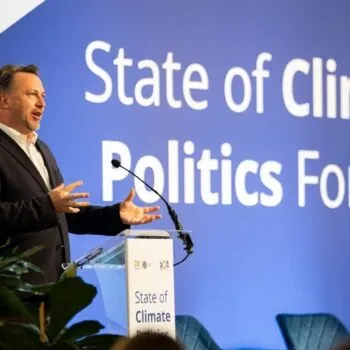The impacts and costs of climate change will be far greater than expected, and are happening faster than expected, according to the Special Report by the United Nation's International Panel on Climate Change (IPCC).
The Paris Agreement encourages countries to increase the ambition of their climate action by 2020 in order to limit these climate risks. Although the ‘ambition debate’ often focuses on whether or not a country will increase its headline target for emission reduction in 2020 – known as its Nationally-Determined Commitment or NDC – there are many ways to measure climate ambition.
E3G has produced an illustrative, non-exhaustive tool to explain this richer and more realistic picture of ‘ambition’ and to better assess which countries are serious about the shift to low carbon, resilient economies.
One of the outcomes we are looking for out of COP24, is for countries to clarify what domestic processes they are putting in place to accelerate the implementation of their current climate pledge as well as lay the groundwork for an uplift in 2020.
These include putting in place long-term plans, reforming key sectors of the economy, banning fossil fuel technologies, and reforming the financial system; as well as all the actions being taken by regions, cities and businesses.
The IPCC report laid out various pathways to stabilize the climate, all of which require unprecedented efforts and wholesale system-wide reform. The report said we have 12 years to entirely rewire and wean our economies off carbon-intensive fossil fuels. This means all coal and gas power plants shuttered; no homes, businesses or industries heated by gas or oil; no vehicles on the road powered by diesel or gas; and the wholesale conversion of steel, aluminium and petrochemical industries to carbon-free production processes.
And still, that won’t be enough. In addition, up to millions of square miles of land will be needed for more forests and other carbon removal techniques to take C02 out of the atmosphere.
The ‘speedometers’ in the infographic are for illustrative purposes; progress in the real economy is at best patchy and uneven. The climate change world needs to better track the reality on the ground of the transition to a low carbon economy. More resources are needed to evidence delivery of climate change commitments – whether nationally-determined as part of the Paris Agreement or announced on stage by non-state actors at marquee events. We need a more robust framework and deeper analysis of real economy indicators to capture the pace and scale of reforms in each country. We also need to be able to effectively communicate that to key decision makers, and mobilize sectoral actors for more momentum and climate ambition across the board.
E3G is currently working with a range of partners to develop more metrics to measure and mobilize the full spectrum of climate ambition. The aim of this work is to provide a solid basis for public debate and targeted government and real economy diplomacy for faster and more ambitious delivery of the Paris Agreement goals. As the IPCC report concludes, we have no time to waste.
E3G's Climate Ambition Infographic




